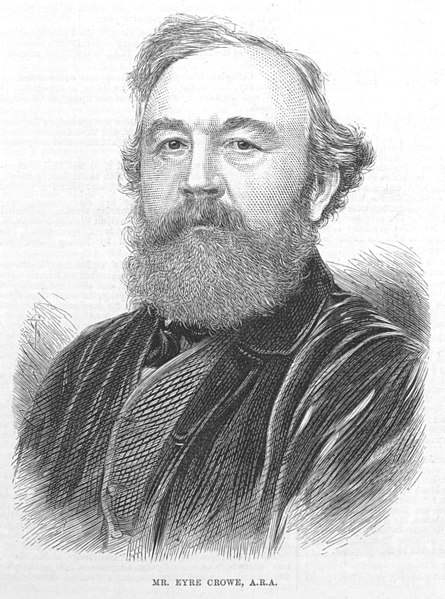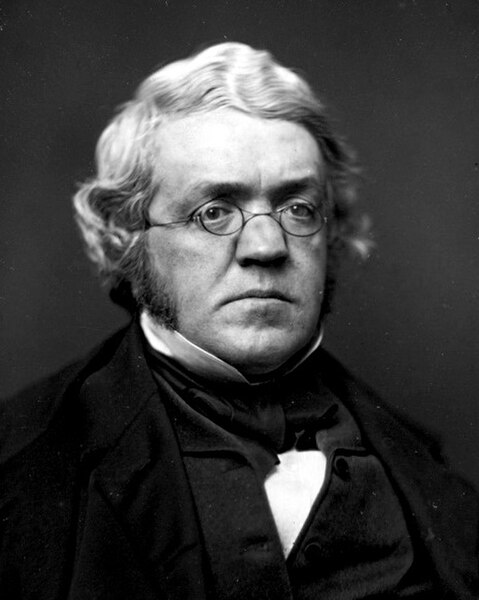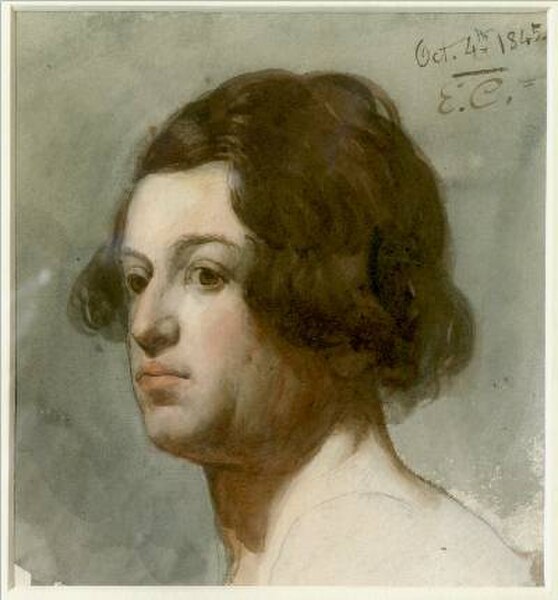Eyre Crowe ARA, was a British painter and author, principally of historical art and genre scenes, but with an interest in social realism during the mid to late 19th century. His work usually centered around the everyday life's of the poor urban working class during the industrial revolution. He was rather progressive for the time, deviating from the idealistic depictions of urban life popular among the public. Instead he aimed for social realism in his pieces. The 1874 edition of The Art Journal "[un]afraid of reality, and [un]shrinking from scenes that less robust minds would consider vulgar." He died on the 12th of December 1910 from Heart failure following a hernia operation. He is buried in Kensal Green Cemetery, London.
Eyre Crowe, A.R.A., by Thomas Dewell Scott of The Illustrated London News
Slaves Waiting for Sale: Richmond, Virginia
"The Dinner Hour, Wigan" one of Crowe's most well known pieces.
William Makepeace Thackeray
William Makepeace Thackeray was an English novelist and illustrator. He is known for his satirical works, particularly his 1847–1848 novel Vanity Fair, a panoramic portrait of British society, and the 1844 novel The Luck of Barry Lyndon, which was adapted for a 1975 film by Stanley Kubrick.
1855 daguerreotype of William Makepeace Thackeray by Jesse Harrison Whitehurst
Image: William Makepeace Thackeray's signature
Self Caricature by Thackeray
Thackeray portrayed by Eyre Crowe, 1845







